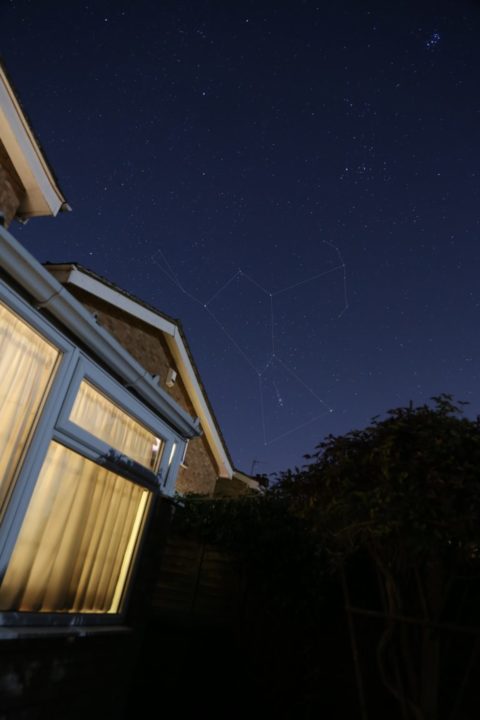I blogged and posted photos of starscapes I shot last on a chilly November night this week at about 11 pm. Here’s the executive summary for getting a sharp photo without star trails caused by Earth’s rotation. It was a clear night, but there was a quarter moon so not perfect conditions, best to shoot after moonset or when there’s a new moon. Also, make sure minimal domestic lighting on and away from streetlights. (Protect your camera from cold and damp if you’re outside for a long time and from condensation when you bring it back indoors).
 Fix wide angle lens, e.g. 20mm-105mm or prime, to the camera.
Fix wide angle lens, e.g. 20mm-105mm or prime, to the camera.
Mount camera on a sturdy tripod, pointing up at the stars of interest. Milky Way, a constellation etc.
Set camera’s white balance to tungsten.
Open up the aperture as wide as it will go – lowest f-stop for the lens and camera. f.4.0 was what my Canon lens could manage at 20mm.
Set ISO to about 1600, but lower it, if you get a lot of purple speckly noise.
Make the shutter speed no slower than 500/focal length, for 20mm that would be 25 seconds. That avoids star trails. If brightest stars look too blown out, shorten the shutter time.
Manually focus.
Set a shutter time delay or use a cable release or app to take the shot.
If you can find somewhere dramatic, like a mountain range, all the better. I made do with the roofline of our houses as a context to the sky.
Thanks to Practical Photography magazine for initial stellar inspiration.